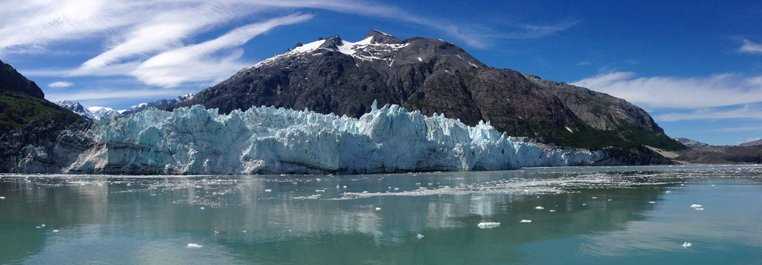It’s a good thing that daylight in Alaska lasts a little longer, because otherwise there would be no possible way we could see Glacier Bay National Park as fully as we were fortunate to today. The National Geographic Sea Bird, now replete with a duo of interpretive rangers and a cultural interpreter on loan from land, pushed up to the most northerly reaches of the bay. Whatever meteorological incantations had been muttered the night before had paid off in full as the majority of the day was somewhat jarringly warm, given our extreme proximity to floating icebergs. We cruised past feeding otters, tufted and horned puffins, hauled out sea lions, simultaneously shy and curious harbor seals, and regally resting mountain goats.
However even this bevy of fauna couldn’t compare to the stunning and somewhat surreal wonders of nature and the namesake of the park, the tidewater glaciers. Before even catching sight of these walls of compressed snow, just witnessing the sheer scale of their past presence is truly humbling. Traversing through a granite corridor carved so recently (on a geological scale) by the now retreating rivers of ice truly gives one the appropriate perspective of how impressive this landscape is. Seeing the smoothly scoured fjord walls start to show the slow signs of plant succession is essentially getting to travel back through time and observe how nature begins to reclaim the barren rock.
The glaciers themselves however never disappoint. As if guarding a castle, the face rises up hundreds of feet topped by rampart-like cerulean pinnacles. Cracks and crevasses show its integrity for what it truly is and we are even rewarded with occasional calving, where huge chunks of ice cascade down with thunderous roars that echo across the water. Sadly even in Alaska the sun must eventually set and we must leave this magical place, at least comforted by the knowledge that every bit of light and ray of sunshine was used.







